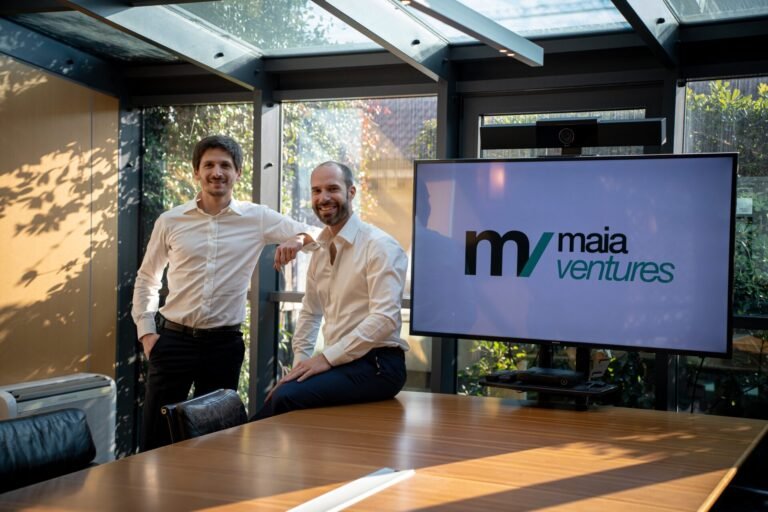The climate right now for foodtech investing is “maybe as bad as it’s ever been,” observes Siddhi Capital cofounder Steven Finn. Capital flowing into some once red-hot sectors has almost dried up, generalist investors have run for the hills, non-dilutive capital is becoming harder to come by, and VC funds are struggling to raise funds.
But deals are still being done. In this new climate, says Finn, the rules of the game have changed. Investors who are still active must now underwrite opportunities with a “financing risk first” mindset, prioritizing durability over disruption.
Meanwhile, he says, corporates have “squandered” opportunities to acquire tech on the cheap, and a new generation of leaner, more focused startups is beginning to emerge.
Against this backdrop, AgFunderNews (AFN) caught up with Finn (SF) to discuss where capital is flowing in foodtech today, which sectors are showing real promise, and how Siddhi is adapting its approach to help portfolio companies weather the storm.
AFN: How would you characterize the climate right now for foodtech investing?
SF: Maybe as bad as it’s ever been, although deals are still getting done. But there is a tremendous amount of uncertainty.
Generalist investors have left and industry insider investors are more concerned with their existing portfolio than bolting on the new sexy thing; they need more reserves for existing stuff. And then finally early-stage VC can’t raise money. A lot of these funds are scared for their next fundraise.
AFN: What does this mean for startups in the field?
SF: They need to do more with less. I would love to see more non-dilutive funding but it’s few and far between. We are after companies taking smaller swings with a clear line of sight to the capital they need to execute. We can’t expect the next investor to be there even if things are working perfectly early.
I call this investing approach “financing risk first.” It sucks but it’s the reality until we have enough cash to get things all the way. Tourist/big generalist money is gone until exits create FOMO [fear of missing out] again.
AFN: What role do you see corporates/strategic investors playing in the next 12-18 months?
SF: I hope they step up. They’ve squandered a huge opportunity to basically get something for peanuts the last few years as companies with real tech/IP have vanished due to the fundraising landscape.
I don’t necessarily always blame them, because our industry has over-promised and under-delivered, but they should be doing more trial work. That said, there are great ones out there like Rich Products [Ventures], so we share a lot of deals with them. I’ve also liked working with the Griffith Foods CVC [Nourish Ventures].
But the big [publicly listed] CPGs? Their CEOs last as long as their corporate venture programs and they change their strategy every six months…
AFN: Your investment strategy at Siddhi Capital… What is it and how has it evolved?
SF: About two thirds by dollars goes to CPG and one third to foodtech. My team is 20 or 21 people now, all over the US, with three of us focused on the tech side. Separate to the main funds, where we’re generally leading or co-leading an investment and taking board seats, we have scout funds, where we’re generally writing much smaller checks. Our foodtech scout fund has done 40+ deals in the last four years. It’s my window into the universe. If I’ve done 40 deals, it means I’ve talked to 5,000.
The biggest difference versus say four years ago, is that we cannot assume anymore that the companies that are doing amazing things can raise money. So we now have to approach the world from an underwriting place of what I call financing risk first.
So Plantible [startup extracting Rubisco, a highly-functional protein from fast-growing aquatic plant lemna] is a great example. Its low hanging fruit is being an egg replacer or a methylcellulose replacer. There’s some scale at which it can be a protein fortifier like pea and soy, but we couldn’t have underwritten it if it needed to scale up to the point of being a pea and soy competitor [in order to be viable].
We needed to underwrite it such that if it never made it past being an egg replacer, that was still a big enough business and it would be financially sustainable.
AFN: What foodtech area are you most excited about?
SF: GLP-1 is our AI. It’s a huge opportunity, but everyone knows that, so they try to put their thing in the bucket they think dollars exist in, and it’s interesting to pick through to find the true opportunities.
The sheer amount of mentions of GLP-1 and seemingly related things in my inbox is insane. But I think there’s a ton of opportunity around them as this [heralds a] seismic shift in consumer behavior. I think some of our CPG investments such as [high-protein cereal brand] Magic Spoon are very well positioned [to serve as companion foods].
But there’s also a big market in alternatives [to drugs such as Ozempic], whether that’s startups like Lembas [a startup behind a bioactive peptide that triggers the production of GLP-1 and other gut hormones that regulate appetite and metabolism] or SuperGut.
I think there’s also room for a whole new set of GLP-1-focused meal plans. For example, we’re invested in a company called mealogic, which I think has a huge opportunity to succeed.
And then ProFuse Technology also has an opportunity here [a portfolio company, ProFuse originally focused on the cultivated meat sector with media supplements to accelerate muscle growth but has since expanded its remit to tap into interest in the pharma space from companies looking to test drugs or supplements that can help people preserve lean muscle mass while taking GLP-1 drugs].
AFN: What applications of AI in the food space are exciting to you?
SF: The bioprocess exploration space is top of mind. Reducing costs by reducing expensive experiments in bioreactors. This can take a lot of the cost out of optimization. AI will be everywhere but I don’t think it’s going to replace formulators or operators in the near future. For CPGs, it can help extend lean teams around sales and customer service as well and make fewer dollars go farther.
On the flip side, stuff I am not excited about is anything that’s just a layer over ChatGPT. Definitely, these tools are super helpful to their users, but I don’t understand how they become long-term businesses. I could just use ChatGPT instead of your layer up on top of it. There’s no moat there.
AFN: Investors have got their fingers burned after throwing money at some pioneering firms in cultivated meat, indoor ag, insect farming, plant-based meat, and animal-free dairy. Do you see a second wave of leaner, smarter startups in these fields succeeding?
SF: Yes. The first wave had to do it all. The second wave needs to focus on what differentiates them in a still immature ecosystem around them but one that is at least starting to exist.
But they have to focus on high value products. [Portfolio company] Future Fields [disclosure, AgFunderNews’ parent co AgFunder is also an investor] is growing insects that [are genetically engineered to produce recombinant proteins] they can sell for thousands of dollars a kilo.
[Japanese vertical farmer] Oishii is focused on super high value strawberries. And then in the [animal-free] dairy space [via precision fermentation], everyone is now making [high-value] lactoferrin, although it is going to take some education to build the market and it could be slower than people think.
AFN: Share some pet peeves…
SF: My pet peeve #1 is when companies with fundamental tech manifest their business model as low margin consumer brands with the idea that revenue is revenue. It’s so off base it makes me almost mad.
I really see way too many of these. They’re all over our space where it’s like, here is the tech, and the way we extract value out of it is by building a brand where we sell the tech at low margins to consumers. I’m sure it works once in a million years, but 99 times out of 100 it’s just too hard. And if your fundamental tech is so not interesting to the industry that the only way you’re able to sell it is as a consumer brand, then it’s not that interesting.
If your business needs to manifest as a consumer brand, in my opinion, you’re already dead.
AFN: Any thoughts on plant cell culture?
SF: We’ve looked at it a bit. We will probably cut a check there or two. I think a totally logical place to look is where you can drop into a market that exists with margins that makes sense.
AFN: Biomanufacturing: where is the smart money going?
SF: [Portfolio co] Liberation Bioindustries [building biomanufacturing infrastructure in Indiana] is one of my favorites. I say it changes the landscape in a big way because it enables every other precision fermentation company to stay focused and allows them to talk seriously to customers and investors without needing to raise $200 million to build a facility that can serve customers in three years. Their existence makes the world tangible.
For companies making ingredients via precision fermentation such as egg proteins… if you approached a corporate and said, I’m going to replace your eggs for cost parity, you would probably be laughed out of the room three years ago. Today, cost parity doesn’t sound so bad.
And the existence of a scaled Liberation Bioindustries facility in Indiana changes the script for all of those precision fermentation product companies and puts them in a place where they can instead say, We’re raising $30 million, not $200 million, for our series B, and customers are already talking to us because we can be up and running in six months [with Liberation Bioindustries]. That’s a night and day change for the entire fermentation industry.
As for the biomanufacturing enabling companies [working on things like rapidly domesticating wild microbes, enhancing cell productivity etc], my number one existential question for all of them, is: Who is your credit-worthy customer?
AFN: Cultivated meat. Where do you see this market going and who will be left standing?
SF: My cultivated meat enablers mostly died or pivoted to serve pharma in a world where their prospective customers couldn’t pay the bills or move fast enough.
ProFuse Tech is a great example [of a pivot] in that they have figured out how to create enough muscle structure to do serious testing, which means they can tap into the GLP-1 trend. Ark Biotech has done an amazing job in pivoting from being about bioreactors to serve cultivated meat to move more into the pharmaceutical customer base that can actually pay their bills.
AFN: The cofounder of TiNDLE recently said: “The fundamental issue is that there is no real underlying consumer demand to shift away from meat.” Is he right?
SF: He’s right. I agree completely. We need independently craveable products at good prices. Consumers don’t care enough to eliminate meat from their diets to sacrifice taste or price at scale. Bad products from the first wave of products that touted themselves as amazing but were just OK have built consumer skepticism and it’s going to be harder than ever to convince people to try new things.
The market will stay as niche as it is as long as it’s pulling on psychological heart strings with products that are worse and cost more.
AFN: How do you support portfolio companies in the current challenging climate?
SF: On the CPG side, I have an internal services team/army that rolls up their sleeves every day to support our portfolio in bespoke ways, whether its building manufacturing facilities, commercializing line extensions, running the full operational backend, or anything in between.
The post Where Siddhi Capital is placing its bets: ‘GLP-1 is our AI. It’s a huge opportunity’ appeared first on AgFunderNews.




